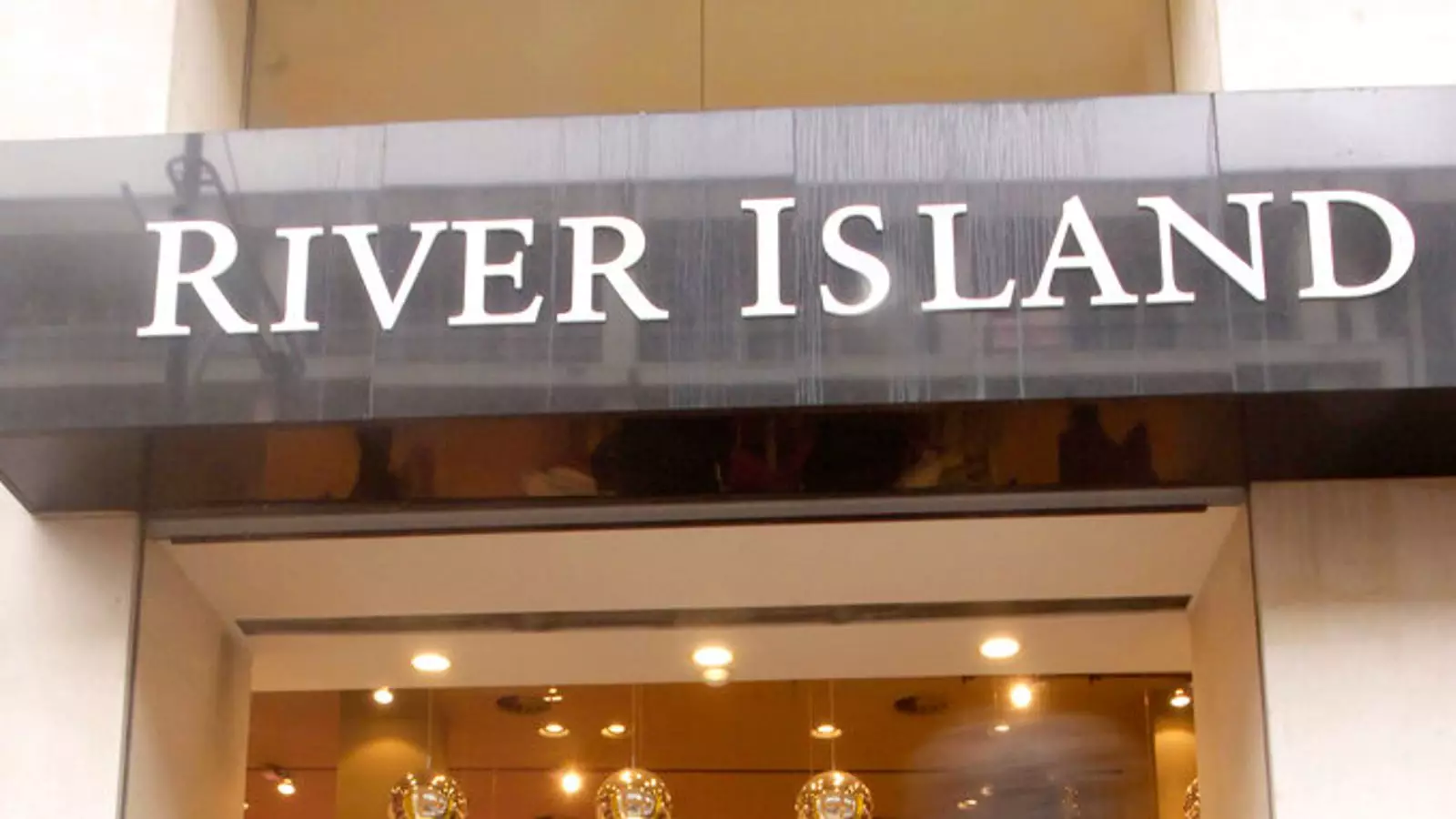The world of retail is a harrowing arena, especially in the fashion sector, where even the most iconic brands are found on shaky ground. River Island, a stalwart of British high street shopping since its inception in 1948, now stands on the precipice of a chaotic transformation. The family behind the brand has enlisted financial consultancy giants PricewaterhouseCoopers (PwC) to chart a potential rescue plan, but at what cost? As rumors swirl, it appears that both store numbers and thousands of jobs hang in the balance, raising questions about what this might mean for a brand that has long thrived in the heart of mainstream fashion.
It is a critical moment for River Island, which operates around 230 stores and employs approximately 5,500 individuals. These numbers, impressive on the surface, mask a troubling reality: the company recorded a staggering pre-tax loss of £33.2 million for the year ending in December 2023, with turnover plunging by over 19%. Such statistics highlight a broader issue impacting many retail chains across the UK, revealing the fundamental struggle for survival in a climate riddled with fierce competition and evolving consumer preferences.
The Evolving Landscape of Fashion Retail
Shifts in customer behavior are not merely trivial fluctuations; they represent seismic changes in the retail terrain. Today’s shoppers crave efficiency, diversity, and convenience, all, it seems, wrapped within a digital experience. The operational risks outlined by River Island’s latest business reports resonate with a troubling truth: conventional retail models are increasingly incompatible with modern consumer demands. Factors like geopolitical instability complicate this landscape further, resulting in supply chain disruptions and rising operational costs. These struggles reflect an urgent need for adaptation, yet the path to a successful pivot is muddy and fraught with uncertainty.
It’s hard to not feel sympathy for what River Island is undergoing. As competition burgeons from nimble startups and established digital giants, the pressures intensify, pushing River Island to the brink of an existential crisis. While the company has traditionally enjoyed a loyal customer base, it appears that reliance on a once-water-tight business model is quickly becoming an anchor dragging the whole ship down.
Financial Strategies Under Duress
The measures being devised under PwC’s guidance are rumoured to involve a court-supervised restructuring. Such a strategy can serve as a lifeline, allowing companies to renegotiate terms with creditors and stave off insolvency. But this approach is not without its perils; the specter of job losses and store closures looms large, sending ripples of anxiety through the workforce and the communities that depend on these stores. The ethical considerations of making such drastic sacrifices in the name of survival highlight a moral quagmire faced by corporate decision-makers.
The ongoing turmoil in retail is exacerbated by governmental policy shifts, particularly tax changes that have left many in the sector reeling. The adverse reactions among retailers, including River Island, illustrate a deeper systemic issue within the industry. If the government does not stabilize this environment, the market risks erasing iconic brands from existence, along with the jobs these companies provide.
What Lies Ahead for River Island?
As River Island grapples with its internal upheaval and external pressures, the question remains: can it find a way to innovate effectively? Waiting for consumers to return to pre-pandemic shopping habits is not an option. The time for transformative change is now, coupled with a keen awareness of the ever-present risks associated with such actions. Adapting to a digital-first approach while embracing sustainability may be a start, but whether those changes will resonate with consumers is another matter entirely.
River Island’s future may very well depend on navigating these treacherous waters with a strategic vision that engages both existing patrons and potential new customers. In the evolving realm of fashion retail, failure to do so can seal not just the fate of River Island but can also act as a stark warning to the many retailers teetering on the edge of similar crises. The heart of retail beats on, but will River Island keep pace, or will it succumb to the very challenges it faces? This moment demands clarity, urgency, and a resolve to redefine what it means to be a fashion retailer in the 21st century.

